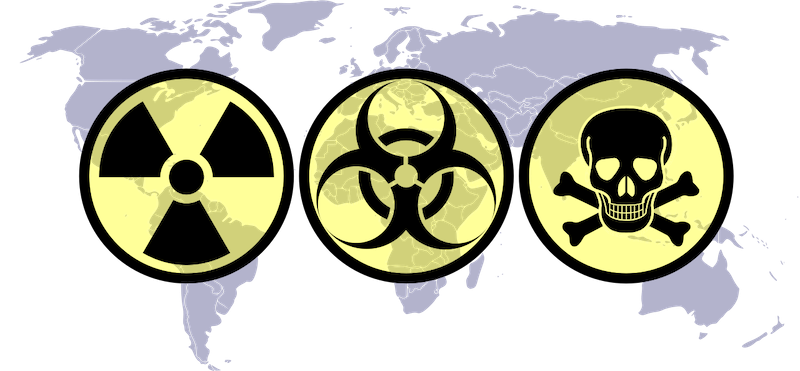New Technology Makes Production of WMD’s Easier, MIIS Experts Warn

In the summer of 1993 a secret service agent named Frank Horrigan was hunting a man who had threatened the president. The man called himself Booth. The moniker was meant to taunt Horrigan who was still haunted by his inability to prevent John F. Kennedy’s assassination 30 years earlier. Horrigan eventually discovered that Booth’s real name was Mitch Leary, an experienced tinker, specializing in DIY composite weapons capable of evading metal detectors. Horrigan became a hellhound on Leary’s trail that summer. Leary was more than just a crackpot with a niche Pinterest hobby: he was a rogue CIA agent with designs on killing an American president.
This story sounds real enough — but it’s actually pure fiction. The 1993 film In the Line of Fire presaged our modern anxiety that cottage-industry weapons production is happening in a neighbor’s bedroom or kitchen sink. Today the ceramic pistol at the heart of movie’s assassination-plot is easily found in a number improvised-gun toolkits online. Similar weapons requiring varying degrees of knowledge and design materials are available to anyone with the willingness to dig deeper than your average Google search. Yet these are prehistoric in comparison to new and emerging technologies like Additive Manufacturing (AM) — better known as 3D Printing — and Artificial Intelligence (AI), two areas of increasing concern for policy makers, researchers and scholars who track the proliferation of weapons of mass destruction (WMD). This intersection of international security and technological advancement is the focus of a recent multi-institutional report co-authored by Robert Shaw, Ferenc Dalnoki-Veress, and Miles Pomper, all experts at the Institute’s James Martin Center for Nonproliferation Studies, and recently featured in Scientific American. “This is the proverbial wicked problem,” according to Shaw, who is also an adjunct faculty member in the Nonproliferation and Terrorism Studies degree program.
With [increased capabilities in 3D Printing] now converging with advances in AI and machine learning, the production of truly advanced goods via 3D printing — including goods with significant military or WMD applications — are ever more in reach.
3D-Printing can replicate and target tumors in the body for more precise cancer treatment. General Motors is improving the performance of seatbelts in automobiles with the same technology. It may also represent a boon for the green economy and reduce our carbon footprint as city planners look to offset building costs and eliminate excess material waste during construction.
At the same time, according to Shaw and Dalnoki-Veress, technological innovations like 3D-Printing and AI can tip the balance of international security, potentially in favor of “rogue” states intent on acquiring chemical, biological and nuclear weapons — without triggering traditional alarms established by international conventions and agreements designed to control production and transportation of materials that could assemble WMD.
Herein lies the “wicked problem” that Shaw referenced; these technological advancements are outpacing “the capacity of governments to apply anything more than the most basic of export controls to manage the spread of advancing 3D printing capabilities,” he says,“managing the sharing and use of these technologies while reducing the risk that they might be diverted to nefarious uses is truly a challenge.”
The skill that used to be a barrier for developing enrichment equipment for nuclear weapons might be taken out of the hands of a human.
As was pointed out in the Scientific American last month, “Today if a country wants to manufacture a dangerous…sarin [gas], it needs to go through public channels to purchase a particular kind of noncorrosive metal piping. Soon it may have the ability to print these supplies instead.” This is the threat at its bottom line of the report, which asks policy makers to stay vigilant of these technological advancements. The reality is that these weapons and the processes to build them, accessible to the hobbyist as they are to the specialist, is no longer a world stranger than fiction.
“The skill that used to be a barrier for developing enrichment equipment for nuclear weapons might be taken out of the hands of a human,” says Dalnoki-Veress,“This is potentially dangerous.”
However, the potential threats raised by the report are not imminent. If an attack were born of these threats it would require a great deal of technical knowledge and capability that is not sourced overnight or easily concealed from the international security community — not yet.This is the report’s intent: to warn against what we know is already here — or soon to be.
“Some of these risks are already materializing,” the authors write, “others are less likely or even speculative. These technological developments must be observed closely, and possible disruptive effects must be identified – if at all possible – before they manifest into threats.”
For More Information
Eva Gudbergsdottir
eva@middlebury.edu
831.647.6606
